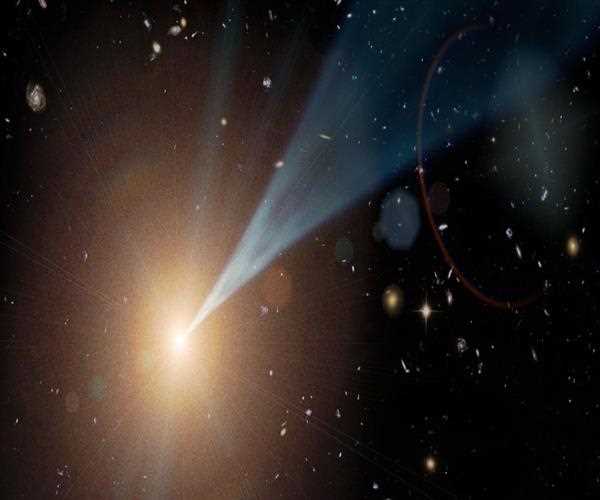
A supermassive black hole is firing high-energy particle jet towards Earth
July 28, 2023
A NASA mission has observed a supermassive black hole pointing its highly energetic jet straight toward Earth. The black hole, called Markarian 421, is located about 400 million light-years away in the constellation Ursa Major.
The jet is made up of high-energy particles, including electrons, protons, and neutrons. These particles are accelerated to near the speed of light by the black hole's powerful magnetic field.
The jet is so powerful that it can be seen in X-rays. NASA's Imaging X-ray Polarimetry Explorer (IXPE) mission was able to use its unique capabilities to study the polarization of the jet, which revealed new details about its structure.
The polarization of the jet shows that it is not a straight beam, but rather a helix. This suggests that the magnetic field in the jet is twisted, which is likely due to the interaction of the jet with the surrounding gas.
The discovery of the helical structure of the jet is a significant finding, as it provides new insights into how these jets are formed and how they interact with their surroundings.
While the jet is pointed directly at Earth, it is not a threat to our planet. The jet is so far away that the particles in it are too weak to have any significant impact on us.
However, the discovery of the jet is a reminder of the power and violence of these objects. Supermassive black holes are some of the most energetic and destructive forces in the universe, and their jets can have a profound impact on the galaxies that they inhabit.
### What are the implications of this discovery?
The discovery of the helical structure of the jet has several implications. First, it provides new insights into how these jets are formed. The twisted magnetic field in the jet is likely due to the interaction of the jet with the surrounding gas. This interaction can cause the jet to bend and twist, resulting in the helical structure that we see.
Second, the discovery of the helical structure has implications for how we study these jets. The polarization of the jet can be used to map the magnetic field in the jet, which can provide information about how the jet is interacting with its surroundings. This information can be used to improve our understanding of how these jets are formed and how they evolve over time.
Finally, the discovery of the helical structure has implications for the potential hazards posed by these jets. While the jet pointed at Earth is not a threat to our planet, other jets may be more powerful and could pose a greater hazard. The discovery of the helical structure can help us to identify these jets and to assess the potential risks that they pose.
### What is next for research on this topic?
Astronomers are continuing to study the jet from Markarian 421. They are using IXPE to gather more data about the jet, including its polarization and its spectrum. This data will help them to learn more about how the jet is formed and how it interacts with its surroundings.
Astronomers are also studying other jets from supermassive black holes. They are looking for evidence of helical structures in other jets, and they are trying to understand how the properties of the jets vary depending on the environment in which they are formed.
The study of supermassive black hole jets is a rapidly evolving field. As astronomers gather more data, they are learning more about these objects and the role that they play in the universe.


